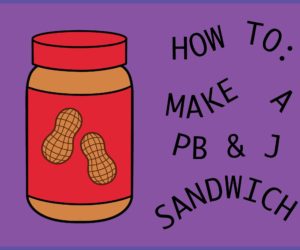I feel like teachers and schools are working harder than ever to keep our students on track.
After spending countless hours redesigning our courses, setting up Google Classrooms, and getting devices out to numerous students… only a few of our kids are taking advantage of these resources or online spaces.
This is frustrating and worrying for the success of our kids and also a reflection on my level of professionalism as a teacher. It is challenging not to feel guilt about being paid while others around the globe have lost their jobs and are now relying on government relief funds.
Despite this worry, I always try to come back to the thought that we ARE doing our best and not to take it personally if students don’t participate, or spend time pressuring students or parents to get their kids online.
We have no idea what’s happening right now in students’ minds, hearts, and homes that’s causing them to put academics on the back burner.
Resist the natural human tendency to make assumptions and judgements: These kids don’t care. The families don’t value education. I’m not doing my job. Why am I getting paid to do this?
Instead, get curious. What else might be going on that’s preventing Google Classroom from being their foremost priority? How else could we drag content out of what they are already doing at home? How can we support without it looking like we are nagging on the students to get online?
I’m finding that it is nearly impossible to focus on ANYTHING or complete a task that is longer than 10 minutes. There are many days I’d rather watch TikTok videos or countless episodes of Netflix shows than get work done; I do the bare minimum because my concentration is shot.
And this is with the maturity level, self-discipline, and time management skills of an adult who’s living in a safe and peaceful home! I can’t imagine spending hours a day on schoolwork right now as a kid, especially if that work was not required for your final grade.
If your students would rather play and Facetime with friends than do school work right now, keep in mind that a) that’s normal behavior for kids, and b) these can be coping mechanisms for stress.
Kids and adults alike are engaging in numbing behaviors and distractions to help them deal with the stress of being confined to their homes. You personally may be coping well, but not everyone is, and making them feel shame about being unproductive in a pandemic isn’t likely to help.
So, don’t blame yourself OR your students if they’re not completing the work.
This is a time when it’s more important than ever to work from a human-centered lens, where we put our collective socio-emotional wellbeing first.
Even if your district is expecting you to teach like everything’s normal, you can infuse grace and empathy in your interactions with kids. You can start class with check-ins, be kind in your late work follow ups, and so on.
Focus on what you CAN control rather than escalating consequences for the stuff you can’t. Your job is to simply continue offering support.
Keep looking for meaningful ways to connect with your students and engage them in ways THEY care about right now (here are some ideas that are working for fellow teachers).
Measure your success by how well you’re doing YOUR part, rather than by how many kids participate.
What you’re doing right now means something, even when students aren’t doing the assignments.
You see, the way we are showing up in our daily work right now is carving out the path to where we’re going next. It is shaping the way our students and families view school. It’s establishing what is truly important in how we educate kids, and what’s most essential about the role of a teacher.
This is a time when the rigid structures that define how we do school have been stripped away. What lies underneath is our shared humanity and connection. This is the time to embrace that, in all of its messiness.

Recent Comments